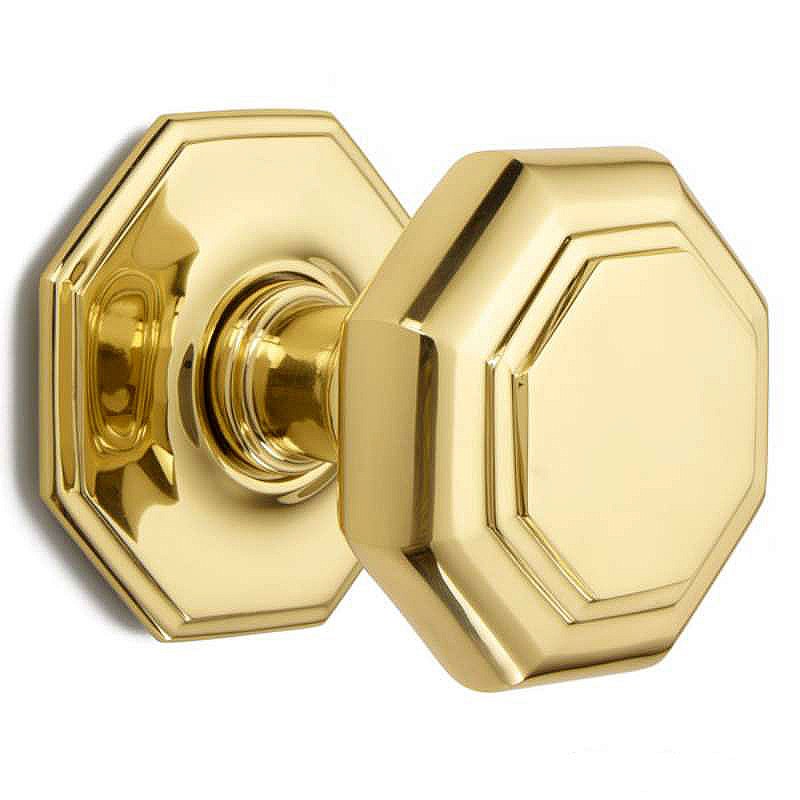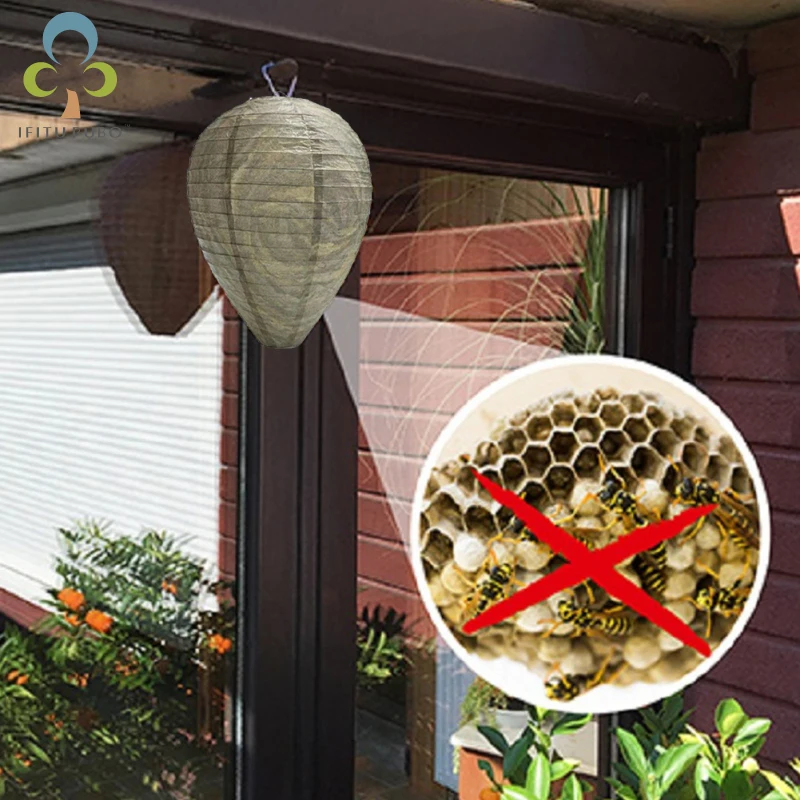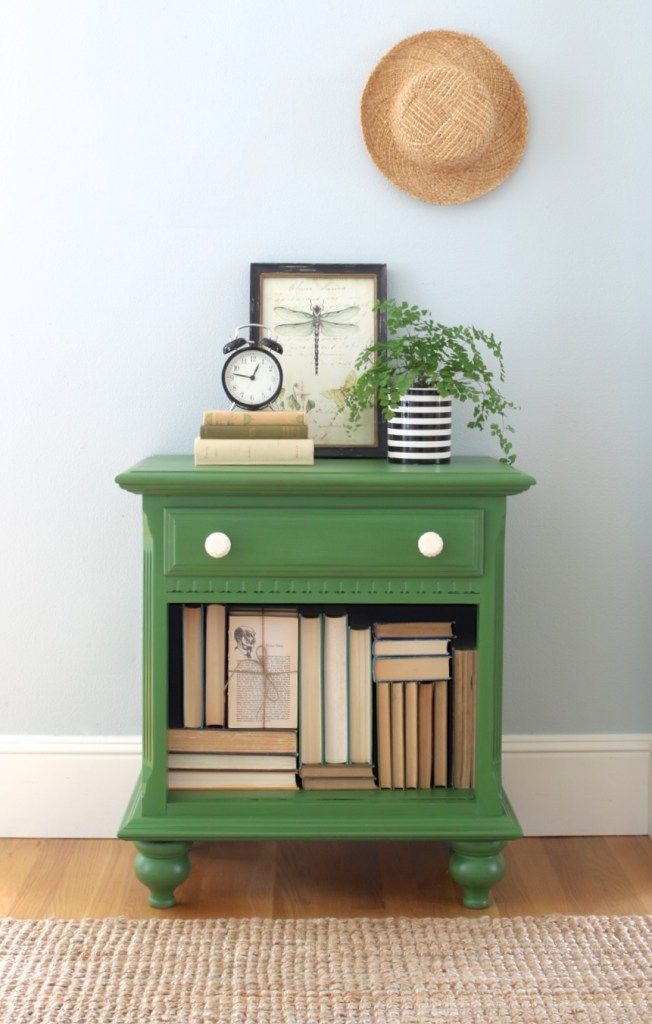How to clean brass doorknobs
6 Easy Ways to Clean Brass Door knobs
Obviously, brass doorknob adds more beauty to the door, but you need to clean them often to maintain its looks. A touch of the brass cleaning solution occasionally will help, but you can use other various natural and artificial mixtures to clean the brass doorknob.
With a homemade mixture of baking soda, water, salt, and vinegar, you can restore the shines of the doorknob. But try to be gentle when cleaning with soft or steel wool to prevent scratches on the brass doorknobs.
In this article, we have provided you different ways on how to clean brass doorknobs, including how to use the homemade solution. We will also provide steps on how to clean a brass doorknob without removing it.
How to Clean Brass Door Knobs After Removing them
First, you need to remove the screws that hold it in place and then drag out both sides of the brass doorknob. Keep the screws in a safe place because you will still need them. After this, you can use the following methods to clean the brass doorknobs.
1. Rub Vinegar and Salt on the Doorknob
It’s either you put it in a vinegar solution, or you can dip a cloth in the mixture and rub it on the knob. Then, spray the right salt quantity on the vinegar-soaked doorknob before wiping it clean with a soft fabric.
When it has dried off a bit, clean it again with a moist microfiber material. Afterward, use a dry rag to clean it for one last time.
2. Using Milk to Clean Brass Doorknob
Put the doorknobs in a small cooking container. Then pour the same quantity of water and milk into the pot, say, five teaspoons of water and five of milk. Now, make sure that the solution is well above the doorknob when it sinks in, then applies mild heat.
Ensure that the mixture gets to boiling point before you decrease the heat supply. Wait for about 10 minutes before taking out the doorknob from the solution. Then, clean with a moist rag before you rinse under a running tap in your sink.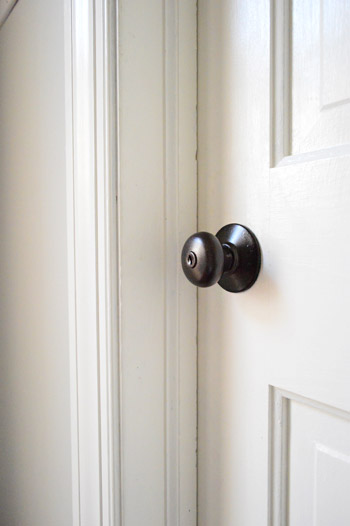
3. Sink the Brass Doorknobs in Ammonia
Get a sizeable bowl that you don’t use for food things and fill it with a reasonable amount of ammonia. Ensure that the brass cleaning solution covers the doorknobs that you want to clean. Now, take the knobs and sink them into the ammonia mixture, ensuring that every part is inside.
After some minutes, say 30 minutes, take out the brass handles and brush then with the cleaning side of a sponge. You can remove it from the ammonia if it’s easy to scrub off dirt and grime. But if the dust is still difficult to clean out, put back the handles into the ammonia bowl.
When you now bring them out, squeeze a little amount of a mild cleaning agent like Barkeepers friend on the knobs. Scrub them with a soft fine wool ball for a while then clean them out with a smooth napkin. Ammonia can be corrosive on the skin, so always wear a glove before touching it.
How to Clean Doorknobs Without Removing Them
You don’t need to remove the knobs for cleaning if the stain is small. Below are some methods you can use to clean doorknobs without taking them out.
Below are some methods you can use to clean doorknobs without taking them out.
4. Regular Cleaning with Soap and Water
Get a full bucket of water and put a little amount of dish soap or any mild detergent. Soak your rag into the solution and squeeze out the water. Now, clean the doorknobs with a lathery cloth. If you come across some intense tints on the doorknobs, scrub with a brush to get them off.
After cleaning again, rinse off the soapy rag in clean water, squeeze and wipe the knob. Ensure you remove soap remnants on it, then dry with a piece of pure fabric.
5. Cleaning Off Stain Using Vinegar
Using Vinegar is among the best ways on how to clean brass hardware. To clean your brass doorknobs with the method, Get a bowl of the natural brass cleaning solution and deep a cloth into it. Afterward, sprinkle a little amount of salt on the rag and wipe the handle thoroughly.
Rinse out the rag in clean water, squeezing out excess moisture. Then use it to clean the knobs once more to remove vinegar and lemon juice residue. Take a soft fabric to dry them off before polishing them with wool to restore the sparkle.
Then use it to clean the knobs once more to remove vinegar and lemon juice residue. Take a soft fabric to dry them off before polishing them with wool to restore the sparkle.
6. Using Lemon Juice
Moisten a rag with lemon juice and clean the handle with it. Take a clean, dry cloth to wipe off the juice residue. Use a dry fabric to wipe it off once again. You can also use lime juice as a substitute.
How to Clean Brass Doorknobs and Polish Them
You can use a brass polish you got from the store to restore the shine on your brass door handle.
Step 1: Wipe with Soap and Water
First, clean the knobs with warm lathery water and a smooth rag. You may have to take out the handle from the door to make work easier for you. However, after cleaning, you can fix it back. Take an old brush with soft bristles and scrub the hidden areas and pick out the crevices with a toothpick.
Step2: Clean with Abrasive Cleaner
Another option is to use a product that can clean as well as polish.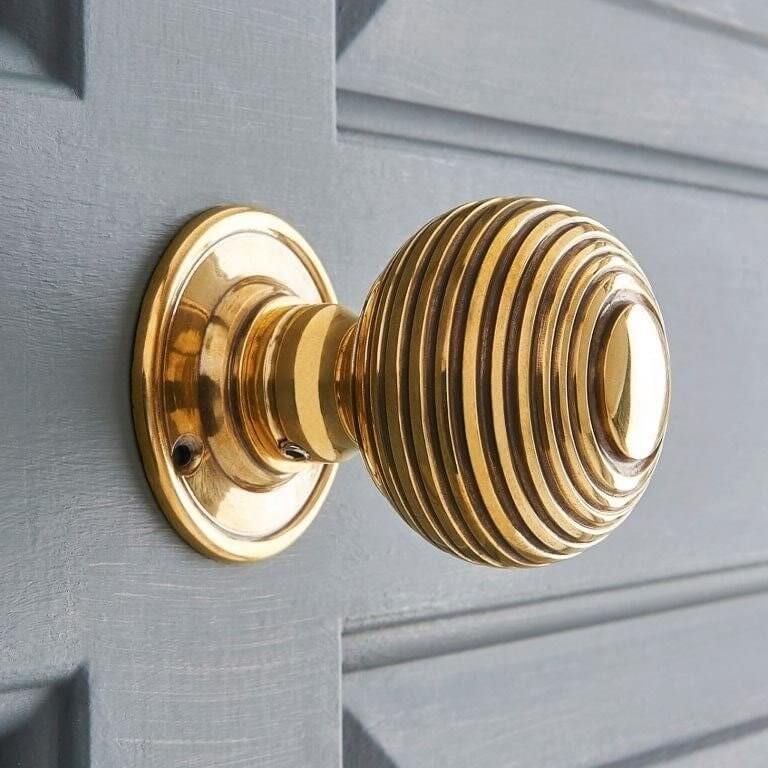 But you can wipe first with a mildly abrasive solution and polish later. Make sure you abide by the guidelines of the cleaner product when applying, and then rinse out nicely afterward.
But you can wipe first with a mildly abrasive solution and polish later. Make sure you abide by the guidelines of the cleaner product when applying, and then rinse out nicely afterward.
Scrub the areas with stubborn stains until you remove them. Rinse and dry to make it ready for polishing.
Step 3: Polishing
If you’re not using a combo product, then ensure you follow the instruction on the manual. Use a soft fabric to polish and shine the doorknob. Ensure you get all the holes and parts of the handle when buffing. Then finish with mineral oil for protection if your brass is unlacquered.
You can also apply lacquer for brass on the knob if you want. Ensure that you don’t apply polish when the handle is still moist to prevent corrosion. No matter the type of polish, do well to dry off before buffing.
Helpful Tips on How to Clean a Brass Hardware
Put on Gloves
Ensure you wear plastic gloves when cleaning any brass door handle to avoid smudging them.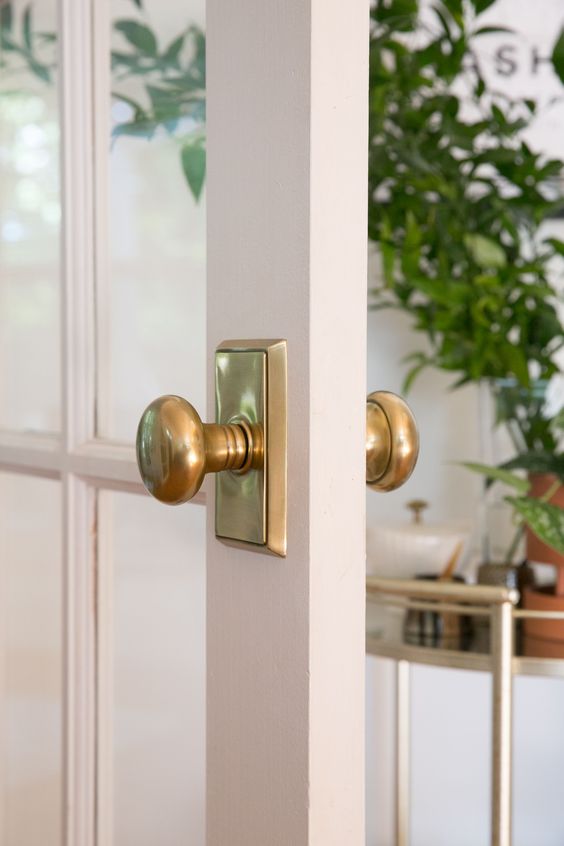 When you touch the brass with bare hands, you may rub dirt on one part, and it will stain faster. So, try and wear a glove even for skin protection from harsh solutions.
When you touch the brass with bare hands, you may rub dirt on one part, and it will stain faster. So, try and wear a glove even for skin protection from harsh solutions.
After Cleaning, Coat with Oil
Coating your doorknobs with oil after cleaning is a protective measure against tints. You can use a paper towel or a clean fabric and deep it into olive, linseed, or lemon oil. Then, rub it on the brass handle surface.
Call an Expert
If you don’t have time but a little cash to spare, you may save yourself the stress and call a professional. That way, your brass doorknobs will receive a pro’s touch, which is way better than a DIY job.
Final Word
If your doors have brass handles, it is best you know how to clean brass with vinegar. This way, you can save yourself the stress and cash of always hitting the store for a brass cleaning solution.
This article highlights how to clean brass doorknobs without removing or when in place using homemade mixtures.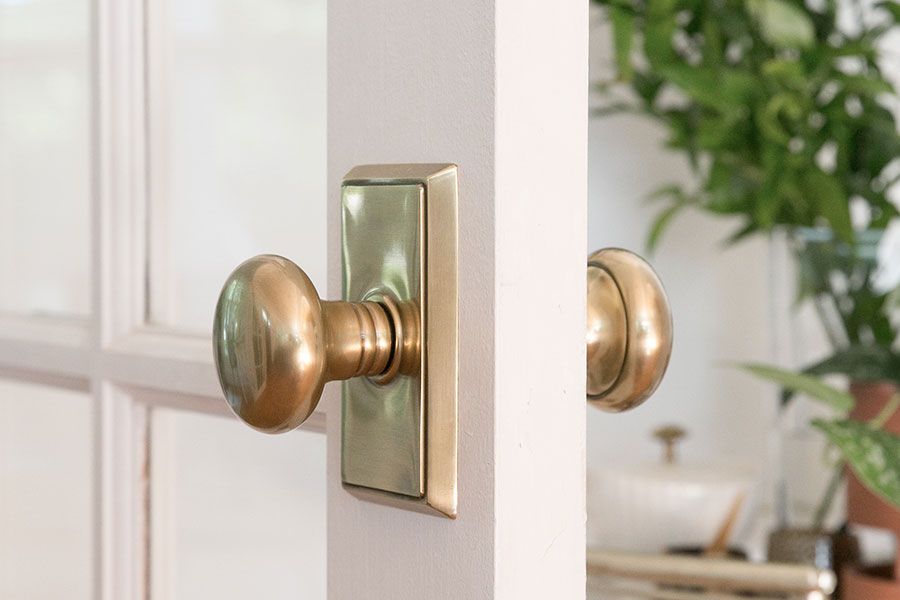 Only ensure that you follow the instructions thoroughly and ensure to wear gloves when cleaning.
Only ensure that you follow the instructions thoroughly and ensure to wear gloves when cleaning.
However, if you don’t want to or know how to clean a brass doorknob, call an expert.
How to Clean Brass Hardware to Make It Look Like New
By
Lauren Thomann
Lauren Thomann
Lauren Thomann is a jewelry expert passionate about crafting and DIY home improvement, writing on both topics. She has been in the antique jewelry business for over 13 years. She completed formal training on diamond and gemstone courses at the Gemological Institute of America and makes her jewelry from reclaimed materials and antiques. While refurbishing her 1916 bungalow on her own, she shares lessons learned through her DIY and home improvement articles.
Learn more about The Spruce's Editorial Process
Updated on 11/08/22
The Spruce / Nelly Cuanalo
In This Article
-
Before You Begin
-
Instructions
-
FAQ
Project Overview
Some homeowners with older houses like the darkened patina that results as brass doorknobs, hinges, and other hardware begin to tarnish. It's even possible to artificially age new brass to get this antique look. But even if you want the metal in your home to look antique, it does not need to look corroded and unsightly with caked-on layers of tarnish and grime.
It's even possible to artificially age new brass to get this antique look. But even if you want the metal in your home to look antique, it does not need to look corroded and unsightly with caked-on layers of tarnish and grime.
Tarnished brass hardware can be difficult to clean. It's easier when you use the right product or technique. There is a single product that can effectively clean brass hardware and other metals such as copper and stainless steel in a matter of minutes. Bar Keeper's Friend is a popular and effective metal cleaning product, but there is a variety of brass and metal cleaners available.
You can also make your own metal cleaner using baking soda and vinegar; it's not as effective but will work in situations where you want to remove some but not all of the patina.
Before You Begin
Carefully remove the hardware, making sure you do not strip the screws or damage the metal. If the screw slots are plugged with dirt or paint, you may need to scrape out the slots so that the screwdriver can grip the screw.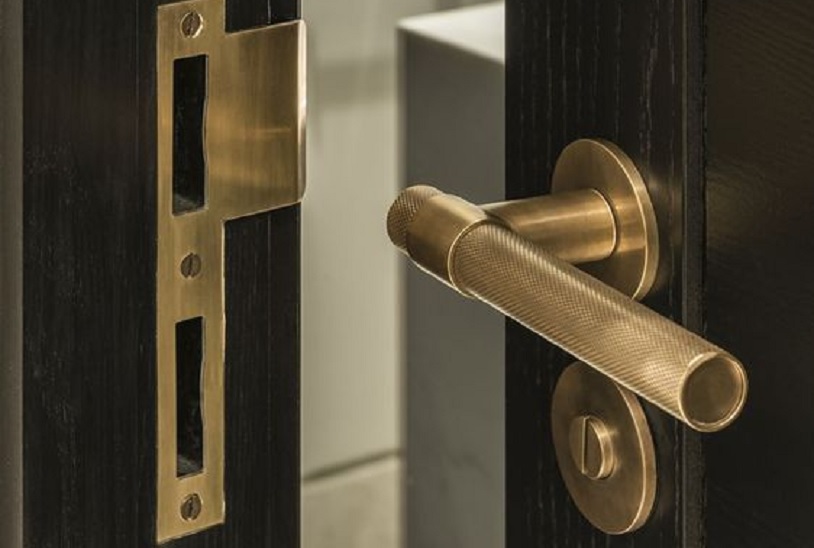 A manual screwdriver works better than a drill driver to back out screws since brass is a fairly soft metal that is easily damaged.
A manual screwdriver works better than a drill driver to back out screws since brass is a fairly soft metal that is easily damaged.
Next, try to identify the type of metal. If it looks like brass, you'll need to figure out if the hardware is solid brass, or brass-plated. If it is solid brass, you will not have to worry as much about damaging the plating with an abrasive cleanser.
One simple method is to test with a magnet. Brass is a non-magnetic metal, so if a magnet is attracted to your hardware, it's likely comprised of a thin brass plating over an iron-based metal. In this case, you will need to be extra gentle in your cleaning and polishing to avoid abrading through the brass.
The Spruce / Nelly Cuanalo
Equipment / Tools
- Toothbrush and/or other soft-bristled brush
- Gloves
- Screwdriver
- Magnet (for identification of metal)
- Small bucket or old bowl
- Dish detergent (if needed)
Materials
- Cloth
- Bar Keeper's Friend or another metal cleaner
Instructions
-
Clean the Hardware With Lukewarm Water
With the hardware removed, wipe off any dust or debris with a lint-free cloth.
 Submerge the items in lukewarm water and let them soak for a minute or two. If the hardware is very dirty, mix in a mild dish detergent to loosen the grime. After you remove the hardware from the water, move immediately to the next step without drying it.
Submerge the items in lukewarm water and let them soak for a minute or two. If the hardware is very dirty, mix in a mild dish detergent to loosen the grime. After you remove the hardware from the water, move immediately to the next step without drying it. The Spruce / Nelly Cuanalo
-
Sprinkle the Hardware With Powdered Cleaner
With the hardware fully wet, sprinkle on a powdered cleaning product so the metal is completely covered.
If you are using vinegar and baking soda, first brush the hardware with a layer of vinegar, then sprinkle on baking soda. The mild chemical reaction of vinegar combined with baking soda is what loosens the tarnish. When it starts to fizz, you will know it is working.
The Spruce / Nelly Cuanalo
-
Scrub Gently to Buff the Surface
Use a soft-bristled toothbrush to gently buff the surface. The cleanser will become paste-like and begin removing the tarnish. If there is a heavy tarnish build-up, it may take repeated scrubbing; add more water and metal cleaner as needed.
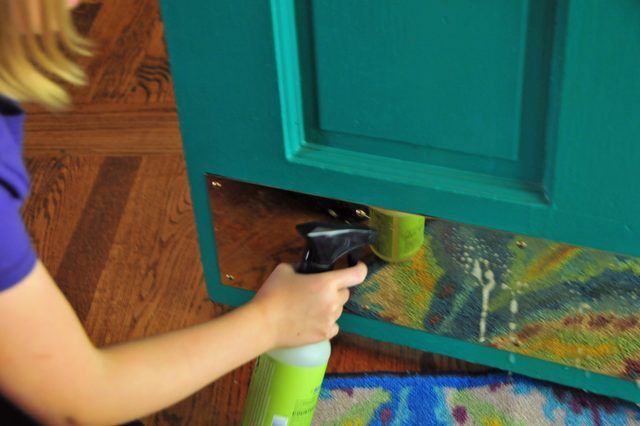
If you are using the baking soda and vinegar method, dip your toothbrush in a bowl of vinegar, and use that to buff the baking soda mixture on the metal.
It will be obvious as the tarnish starts to come off, but if you want to retain some of the antique patina, focus the toothbrush on the high points and avoid the crevices and edges.
The Spruce / Nelly Cuanalo
-
Rinse the Hardware
Once the metal is cleaned to your liking, use lukewarm water to rinse off any remaining cleaning solution. Next, take a damp lint-free cloth or paper towel to buff the hardware. Make sure each piece is dried completely to prevent rust or tarnish issues.
The Spruce / Nelly Cuanalo
Watch Now: Watch Now: Easy Ways to Refurbish Hardware
How to clean door handles, hinges and knockers
An article on how to clean door handles, hinges and knockers. Chances are you use them every day without thinking about cleanliness, even if you're doing a thorough spring cleaning at home. They accumulate dirt and invisible bacteria with every use.
They accumulate dirt and invisible bacteria with every use.
The average small house has at least two dozen handles, not to mention hinges and knockers, which are probably the most neglected part of your doors - at least until they fail or need to be replaced. lubricant.
Here at Oktava Market, we understand that the cleanliness and beauty of your doors are just as important as reliable security. With that in mind, we want to offer you some valuable cleaning tips for the most common materials that door handles, hinges, and door knockers are made from. So, get your gloves ready and keep reading because most of these cleaning methods involve using products you probably already have on hand.
Tips Before Cleaning Copper Door Handles and Hardware
Brass and copper are two traditional door handle and hinge materials that are becoming increasingly popular in modern homes. Although they are prone to tarnishing, they can be easily cleaned with a few household products and a little bit of lubricant.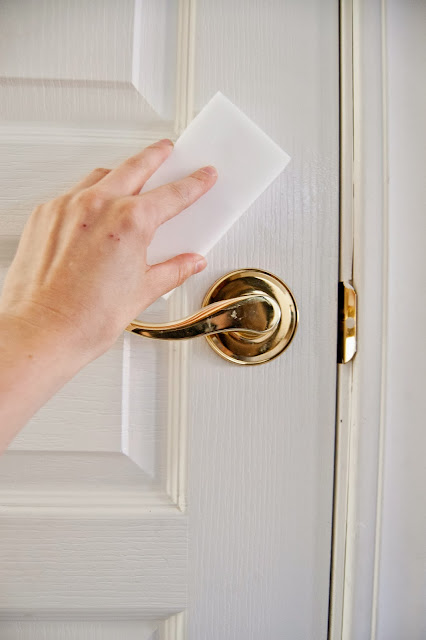 However, there are two important things you should ask yourself before you get started:
However, there are two important things you should ask yourself before you get started:
- Is the hardware brass or copper?
- Whether the item is clear varnished.
How to clean brass and copper doorknobs
Before attempting to clean brass or copper doorknobs or hardware, you need to determine if it is solid brass or brass iron, steel or zinc, as these should only be cleaned with warm water and soap. Rough polishing or the use of abrasives can remove the copper plating and damage your equipment.
To find out what you are dealing with, place a magnet on an item. Magnets won't stick to solid brass, so if it does, you most likely have handles or hinges made from another material that's just brass plated.
Clear Coated Door Hardware Cleaning
If your hardware has a glossy finish, your attempts to clean the underlying material will fail. To remove clear coats and get to the smallest particles, you need to use mineral spirits or another solvent.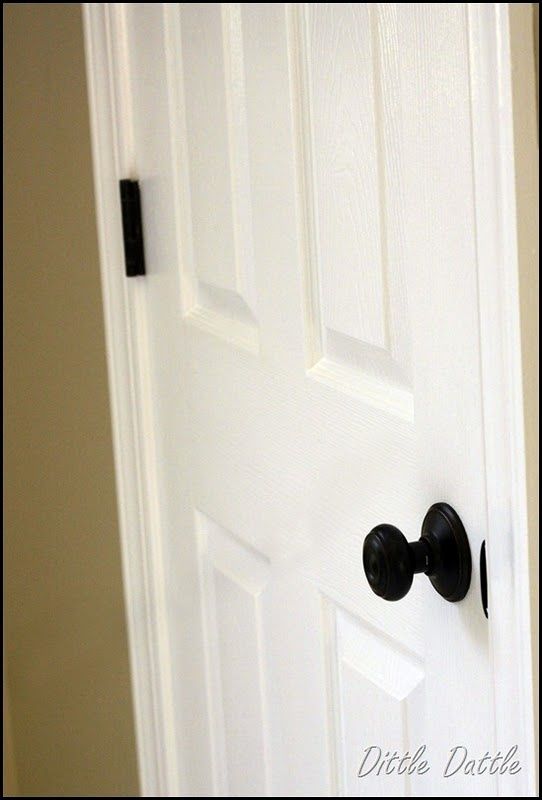 You can always reapply a clear coat after cleaning.
You can always reapply a clear coat after cleaning.
Two Easy Solutions for Cleaning Copper and Brass Doorknobs
Recipe #1:
Make a paste with equal parts flour, vinegar and salt. Each tablespoon can be started depending on how much equipment you plan to clean. Gently rub the paste into the hard copper door hardware (tip: this works for your cookware too). Let the paste sit for a few minutes before buffing the paste with a soft cloth and enjoy the resulting shine.
Recipe no. 2:
Take a ripe lemon cut in half and cover the exposed inner flesh with salt. Rub the plated brass or copper surface to remove dirt, bacteria and scuffs, then use a cotton cloth to remove any residue.
Cleaning Stainless Steel Door Hardware
Cleaning stainless steel can be a bit tricky. First of all, you must know what not to do so as not to damage the surface.
Cleaning of stainless steel excludes:
- Never use chlorine bleach or bleach.

- Avoid using steel wool and other abrasives.
- Do not use oven cleaners.
- Avoid using hard water and do not start cleaning the stainless steel handle when it is warm.
Be careful when trying to use popular store-bought cleaners as they can damage the finish and leave you with unsightly surfaces.
How to clean stainless steel door handles
The easiest and safest way to clean a stainless steel door handle is to use a soapy, damp soft cloth and then rinse with clean water. However, for sticky dirt or stubborn residue, you can create a mixture of equal parts olive oil and vinegar.
You can also apply a small amount of Lemon Soda Polish to a cloth and rub into doorknobs and hinges until they are flawless.
Cleaning Sterling Silver and Silver Plated Handles
This is one of the most tarnished materials on earth. You can remove silver scuff with a variety of store-bought pre-made products. However, if you are looking to save some money and time, you may want to consider the following solution. It requires the removal of handles.
It requires the removal of handles.
Take an aluminum basin (ideal deep basins from the market) and fill it with one cup of baking soda, placing the handles in it, then pour boiling water over them. Darkening quickly "melts". Once the handles are cool, you can polish them with a soft cloth to a great shine.
Cleaning Tin Doorknobs
We know it sounds weird, but cleaning tin is easily achieved by rubbing outer cabbage leaves all over the surface. Yes, we are serious! Simply rub the leaves hard on tin doorknobs, hinges, and other surfaces to remove buildup, then buff them with a soft cloth to restore their shiny, clean look.
Solutions for cleaning crystal, glass or similar materials
Most general purpose cleaning solutions will adequately clean crystal, glass and clear plastic pens. However, be careful to avoid those containing solvents that can damage your hardware.
Simply spray a little solution on the surface, let it soak in for a minute or two, then dry and polish vigorously with a clean cloth. More than one application may be required to clean the handles depending on the depth of contamination.
More than one application may be required to clean the handles depending on the depth of contamination.
Clean and disinfect brass handles
Today I would like to give you some useful tips how to wash and disinfect brass handles .
In times of Covid 19, cleaning and disinfecting your home's handles is very important because, if touched many times during the day, they can be receptors for dirt and bacteria that we ourselves carry from outside.
In this article I will explain how to clean brass knobs . Brass is not a pure material, but an alloy of zinc and copper, which was already used in ancient times for the manufacture of braziers, jugs and other everyday items.
Brass handles are widely used because, compared to other materials, they are very resistant to corrosion and have a long service life. However, it has a drawback, it oxidizes . To bring it back to its ancient splendor, you need to use the right products because despite resistance, the wrong detergent can permanently ruin your pen.
Two solutions, universal but not obvious, are:
- go to a specialist shop, such as a hardware store with a good assortment or a DIY store, and buy a special product for cleaning brass,
- or you can choose natural product, made by you at home. Without high costs and ecological choice.
To clean brass handles, you can prepare various natural mixtures at home:
- with Marseille soap flakes : fill a basin with hot water and place Marseille soap flakes in it, when the mixture is ready, dip a soft sponge and gently clean the handles.
- Hot water and baking soda : mix them together to make a cream that you will leave on your hands for about ten minutes. Rinse with hot water and lemon and dry with an anti-static cloth.
- Lemon juice and vinegar: mix lemon juice and vinegar in a bowl, then use a sponge or soft damp cloth to remove any dust or oxidation from your hands.

Instead, to remove grease stains from brass handles, you can pour 2 or 3 drops of dishwashing detergent onto a damp cloth and gently rub the handles.
Also, for disinfection, you can prepare a mixture at home:
- To disinfect without removing stains, mix with hot water and white vinegar. Leave the solution on the handles for a few minutes and then blot with a clean cloth.
- If, on the other hand, you want to disinfect and clean a dirty pen, soak some cotton wool in alcohol and then wipe it with a cloth soaked in red wine to remove the residue. Finally, if you have oxidized brass handles, put some yogurt on them.
After cleaning and disinfection, you can always start polishing with do-it-yourself products.
We advise you to wrap the handle with paper tape before you start polishing, so as not to stain the door.